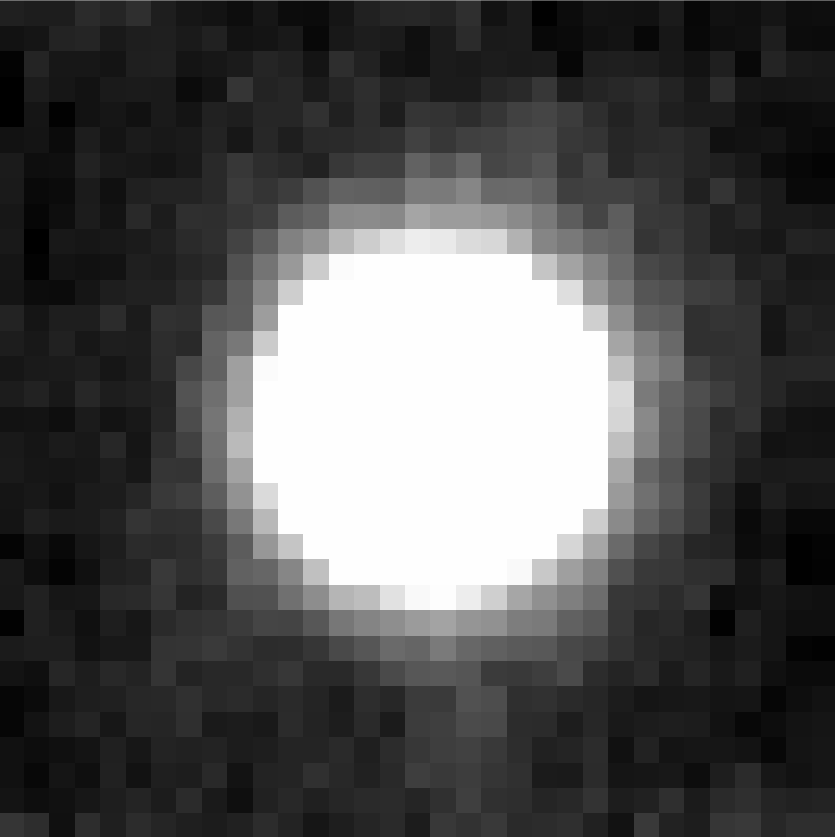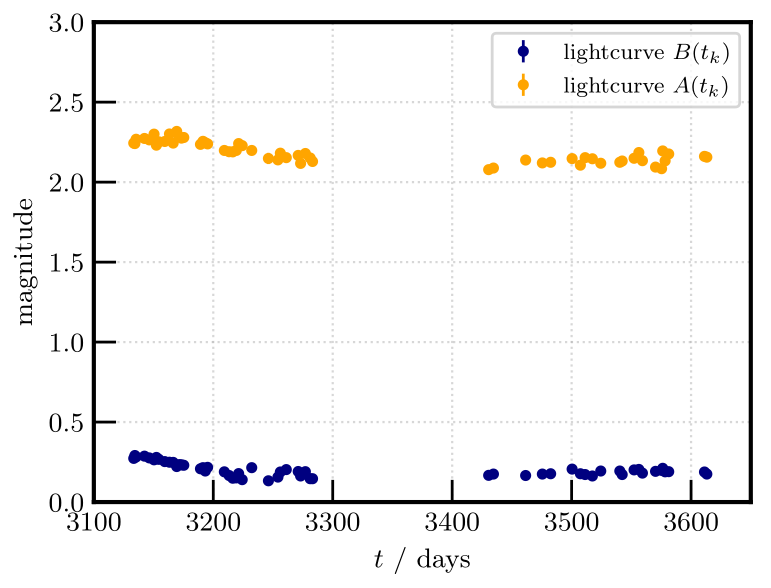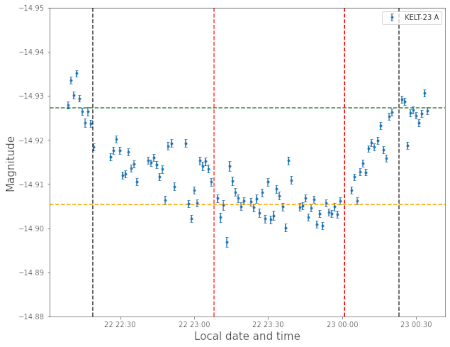Advanced laboratory course in optical astronomy
Master course, Rheinische Friedrich-Wilhelms-Universität Bonn, 2021

Description
The lab course consists of two parts. First, the data reduction of a lensed quasar to obtain a final estimate of the Hubble constant. Second, the observation of a transit using AIfA telescope to determine the radius of the planet. In case of bad weather, we will perform the characterization of the AIfA camera, measure the dark current and gain, and determine the full-well capacity.
Data reduction
For this part of the experiment, all the science and calibration frames were obtained using the Enzian Camera at the Hoher List 1m telescope. The target consists of a lensed quasar for which we want to measure the time delay. The first step of this part is to reduce the images, which means applying bias, dark, and flat field corrections, and creating a coadded science frame. Then, a PSF model is created using stars in the coadd. After that, a multicomponent fitting is applied to the lensed system using galfit, which ultimately leads to obtaining light curves that can be used to determine the time delay and, consequently, the Hubble constant.
Below figure is a example of an stacked PSF.

In the figure below you can see the example of two obtanied light curves.

Transit
This part is done using the AIfA (telescope)[https://astro.uni-bonn.de/en/students/teleskop]. The idea is to measure the light curve of a host star during the transit of an exoplanet. With an estimated magnitude depth, we can determine the radius of this exoplanet. In this link and here you can look for exoplanet candidates for planning the observations.
Recommendations for selecting the observation night:
- Bonn has very few clear nights, so that is the main factor for selecting the day.
- Pick a bright host star, at least magnitude 12 or brighter.
- The magnitude depth must be at least 0.015 or deeper.
- Prepare at least two transits in case something goes wrong with the first one.
- Bring visibility plots.
- Check that the altitude is larger than 20 degrees.
- Check that it is not too close to the moon, especially if it’s full.
- Bring the expected field of view, matching the size of our camera.
In the figure below, you can see the magnitude depth of a transit.

CCD Characterization
To characterize the camera, we measure the dark current as a function of temperature. The relation between the dark current and temperature should satisfy the equation $I_{\textrm{dark}} = c T^{3/2}\exp(-\frac{E_{g}}{2k_{B}T})$, and the intrinsic constant, c, of the detector can be estimated. Then, the gain is determined by measuring the shot noise and signal level. Measuring the shot noise requires a strategy to remove the readout noise and pixel response non-uniformity.
Finally, we study the linearity of the camera and determine the full well capacity by measuring the photon transfer curve and removing the “fixed pattern” noise.
In the figure below is presented an example of a linearity plot.
